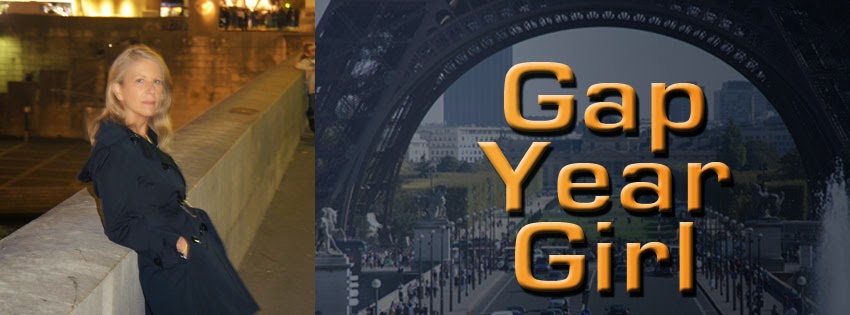Sevilla is spectacular. We thoroughly enjoyed Barcelona, but we loved Sevilla even more. Cities exude very distinct vibes and those of Sevilla are of celebration. Purely by chance, we arrived in Sevilla on a weekend. We were thus lucky enough to be there on a Saturday night when all the city appeared to be out partying – young parents pushing strollers, elderly couples arm in arm, teenagers speaking a mile a minute, lovers of all variety and ages entwined on the corners and international tourists happy and laughing, appreciating that they were in the perfect city for a twilight stroll. For no reason other than celebrating life in Sevilla, hundreds of people spilled out of bars and restaurants into the streets and filled the city with chatter, laughter and the clinking of glasses. It was definitely pleasant to observe everyone across the generations taking advantage of the night air. The Spanish paseo, or ritual evening promenade, was in full swing and we needed no convincing to join the crowds.
With only two days and two nights to see the capital of Andalusia, we had to be efficient with our time and determined with a plan so we drew up an itinerary that included touring the cathedral (the largest church in Spain and the third largest in the world behind St. Peter’s and St. Paul’s); climbing the Giralda tower (a former minaret converted to the cathedral’s bell tower and which one ascends via a corkscrew ramp rather than stairs, as did the Moorish muezzin on horseback five times a day to call the faithful to prayer); wandering the residential Triana district across the Guadalquivir River; crossing the Parque de María Luisa (including the grand Plaza de España from the 1929 Exposition); and, exploring the narrow streets of the whitewashed Barrio de Santa Cruz (the former Jewish neighborhood).
Finally, but number one on our list of musts for Sevilla, was experiencing some genuine flamenco, and not just a touristy show with food being served and drinks poured, but the traditional, heartfelt version. Joe did some Internet research and we settled on the show at La Casa de la Memoria deep in the Barrio. It turns out that we chose very well; the performance was mesmerizing and emotionally intense in a way I hadn’t expected. Young artists in their 20s and 30s, including a guitarist, singer and two gorgeous dancers (the male was Colin Farrell’s twin), held us transfixed for an hour in our front-row seats. The intimate venue was a dimly lit courtyard in a 17th century palace-home with only a few rows of seats surrounding the performers on three sides. Inspired by those who have lived in southern Spain through the centuries -- the Moors from North Africa, the gypsies and the Spanish -- flamenco emanates from deep in the soul and movingly combines the romantic, passionate and celebratory influences that have created the tapestry of modern Andalusia. It certainly touched my soul and I don’t know that I’ve ever experienced a more emotionally charged live performance. Had we stayed in Sevilla longer, I know I would have returned to experience an additional show with different performers. I can still hear (and feel) the loud and soft percussive handclaps and the rhythmic, ear-splitting feet stamping; this proud art form grabbed my heart and still hasn’t let it go.
Sevilla surprised us at every turn. The architecture, in characteristic mustard and burgundy, was lovely and though the color combination doesn’t sound very attractive, it works well on the stately Sevillan buildings. The delicate Moorish influences of pretty arches, flowered patios and colorful tile work were everywhere. Carriages pulled by elegant horses added to the city’s romance as did the many cobblestoned pedestrian ways.
When we initially drew up our plan for exploring Spain, we focused on Andalusia, the part of the country neither of us had ever visited, and decided to use our two-week home rental south of Granada as a base of operations. Rather than pack up and move several times, the plan was to simply take day trips from Chite. Now that we’ve been to Sevilla, we know we got it wrong. We should have stayed near Granada for a week and then spent a full week in Sevilla. The two nights we allotted were just not enough to fully explore this beautiful, vibrant city. While we definitely got a delicious taste, we’ve now added Sevilla to our list of places to which we must return.
The official motto of Sevilla, seen everywhere throughout the city on sewer caps, busses and even Christopher Columbus’s tomb in the cathedral, is “No8Do.” Loosely translated, it means “forever Sevilla,” but the more formal meaning, tied to a legend involving a skein of yarn (the figure “8” in the emblem) and the loyal subjects of King Alfonso X, is “Sevilla has not abandoned me.” I actually like the former meaning, knowing that forever we’ll have memories from Sevilla and hoping we’ll return someday to create more.
Pictures of our adventures: http://gapyeargirlgoestoeurope.shutterfly.com
Pictures of our adventures: http://gapyeargirlgoestoeurope.shutterfly.com
